Mars rover accidentally discovered extraordinary substance that ‘shouldn’t be there’
- The Mars Curiosity rover discovered something as it ascents a mountain on the Red Planet
- The discovery left NASA experts stunned
- It’s thought the bright yellow substance ‘shouldn’t be there’ at all
Published on Jul 30, 2024 at 4:15 PM (UTC+4)
by Amelia Jean Hershman-Jones
Last updated on Jul 30, 2024 at 6:19 PM (UTC+4)
Edited by
Tom Wood
The NASA Mars Curiosity Rover has uncovered an unexpected surprise in a Martian rock.
It was said by experts that the substance ‘shouldn’t be there’.
There’s a lot of it, too.
DISCOVER SBX CARS: The global premium car auction platform powered by Supercar Blondie
The NASA Mars Curiosity rover mission
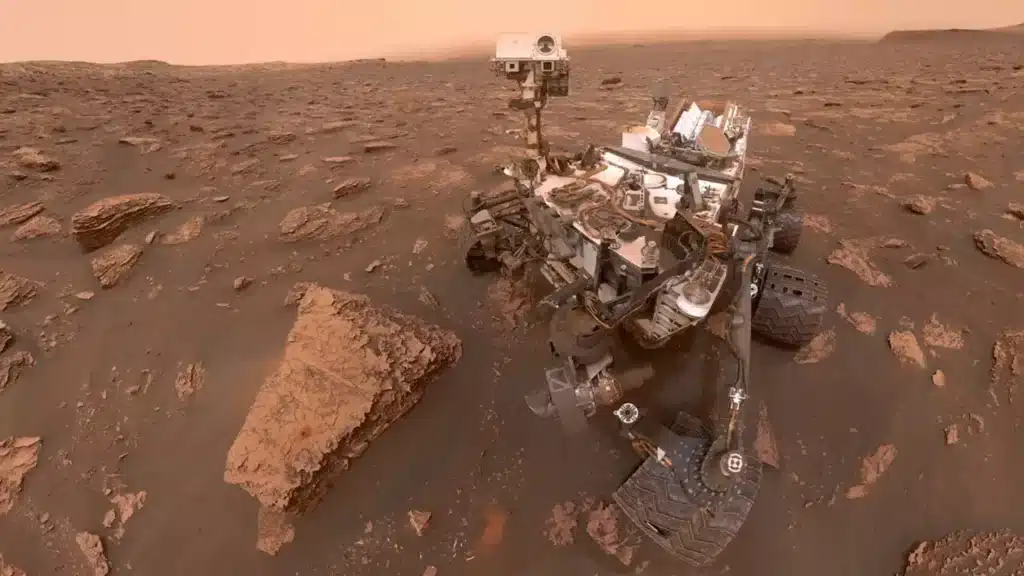
The Mars Curiosity rover has been exploring the Red Planet to learn more about its geology and climate since 2011.
The ultimate goal is to determine whether the region near Gale Crater and Mount Sharp could support life.
Since October of last year, the rover has discovered many rich sulfates in the area – a salt containing sulfur formed when water evaporates.
It seems life on Mars is the goal for SpaceX who’ve unveiled a futuristic new spacesuit for humans to wear there.
The discovered substance
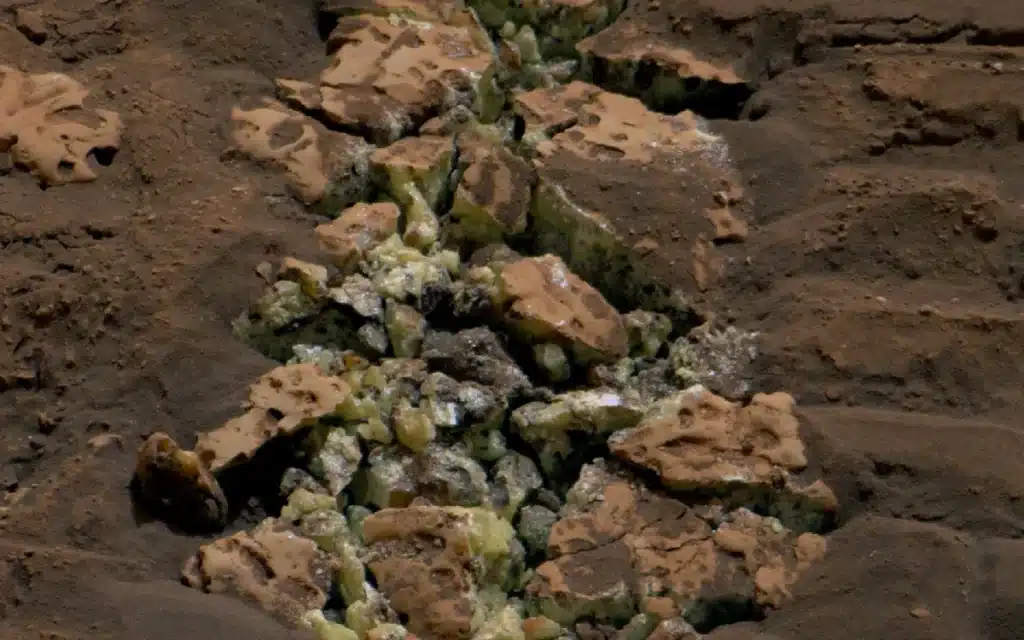
Most recently on May 30, as it drove over a rock and accidentally cracked it open the rover found rocks made of pure sulfur.
It’s a first on the Red Planet.
The pure elemental yellow sulfur crystals form in a narrow range of conditions that scientists previously hadn’t associated with the history of the Martian location.
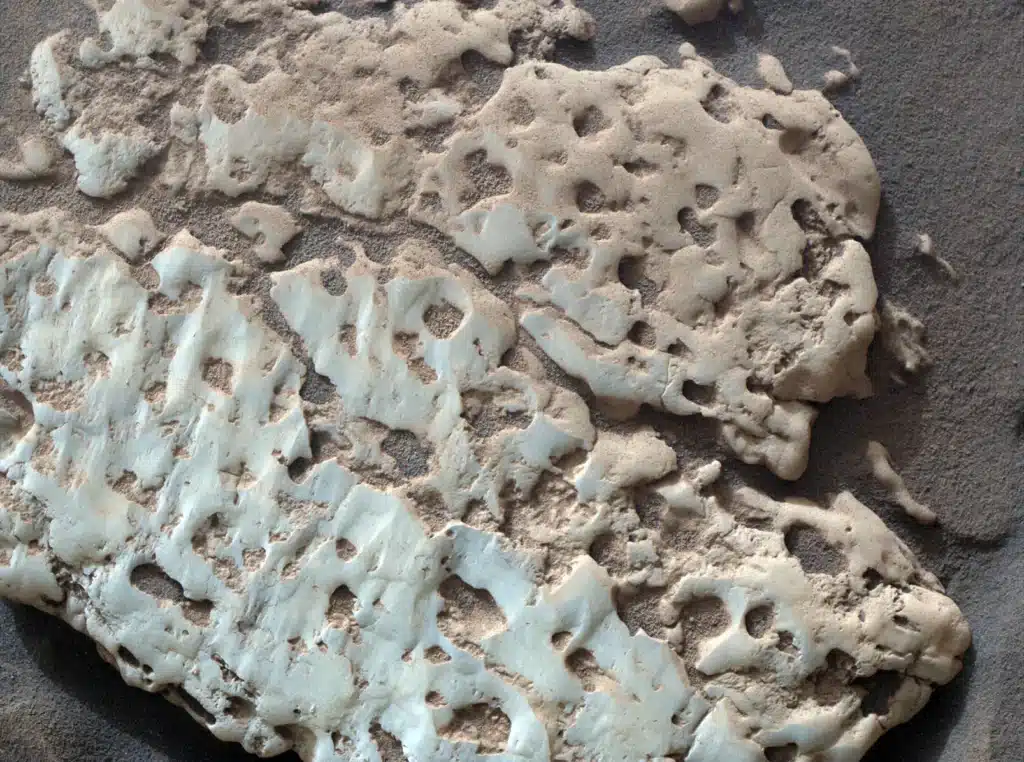
The relationship between this elemental sulfur and previously discovered sulfur-based minerals in the area isn’t yet known.
The NASA Mars Curiosity Rover found an entire field of rocks that looked similar to the one that was crushed.
“Finding a field of stones made of pure sulfur is like finding an oasis in the desert,” Curiosity’s project scientist, Ashwin Vasavada of NASA’s Jet Propulsion Laboratory in Southern California, said.
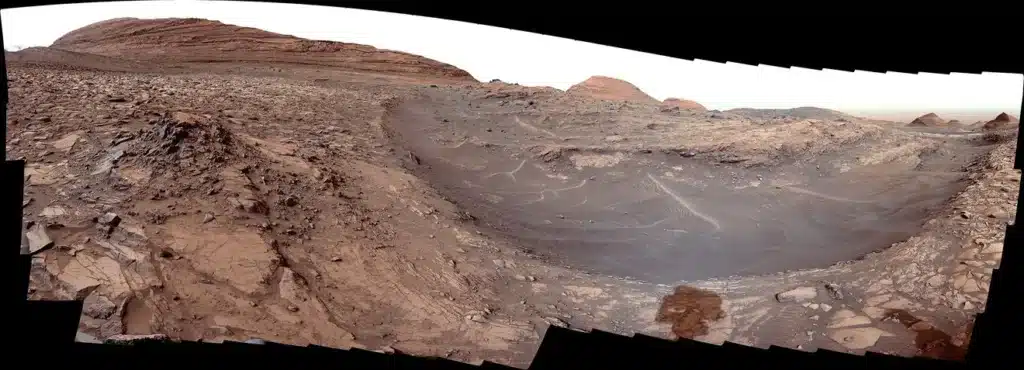
“It shouldn’t be there, so now we have to explain it. Discovering strange and unexpected things is what makes planetary exploration so exciting.”
The sulfur rocks were too small and brittle to be sampled with the drill.
However, a large rock nicknamed ‘Mammoth Lakes’ was spotted nearby, allowing Curiosity to bore a hole with a drill on its robotic arm.
Powdered rock was collected for further analysis.
Discoveries so far
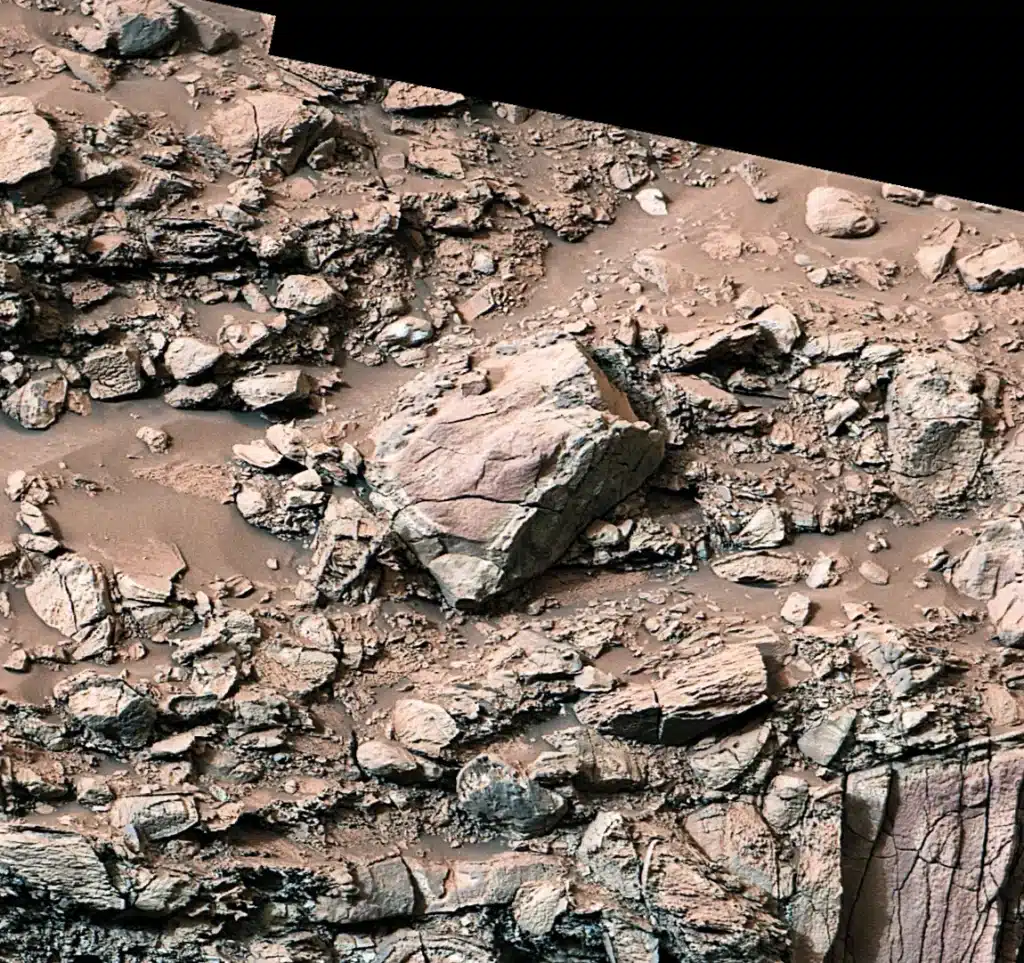
Ascending Mount Sharp since 2014, every layer of the mountain represents a different period of Martian history.
Scientists hope to find out where and when the planet’s ancient terrain could have provided the nutrients needed to support microbial life on the planet.
It’s believed the Gediz Vallis channel was carved by flows of liquid water and debris that left a ridge of boulders and sediment.
Curiosity has since left Mammoth Lakes and is on its way to explore the channel.
This isn’t a quiet period on the planet, with scientists recently discovering frost on volcanoes at the equator.
NASA’s car-sized rover also made the startling discovery that the planet had once hosted streams, rovers, and a sprawling 22-mile-wide lake.

London-based Amelia cut her journalistic teeth covering all things lifestyle, wellness, and luxury in the UK capital. Fast-forward a decade and the senior content writer and editor has put pen to paper for glossy magazines, busy newsrooms, and coveted brands. When her OOO is on from writing about cars and heading up on-site SEO you can find her spending quality time with her young family, in the gym, or exploring the city she loves.




